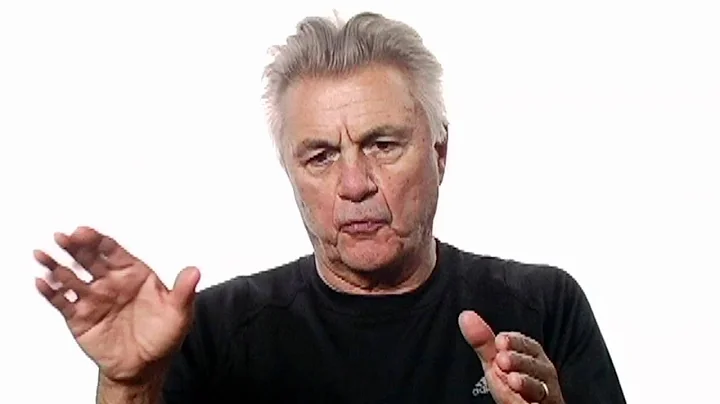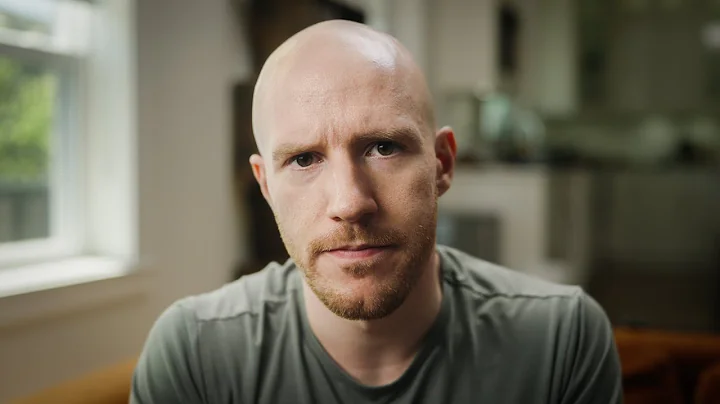says that the eyes are the windows to the soul, which is the same in animation.
For example, when the character's eyes lose their highlights, the audience immediately feels that something is wrong, as if they have seen the Noble Phantasm of Honesty hidden behind her.
It is not difficult to find that the characters in Japanese animations are basically "minimalist lines" except for the eyes and hair, especially for some animation companies with stable painting styles, even if the hair is removed, it is a face - That's right, it's Kyoto.
In addition to the sudden loss of highlights, some characters have special eyes from the beginning to distinguish them from other characters, which is one of the common expressions in manga and animation works.
Of course, I'm not talking about writing wheels.

The ancestral star eye
The star eye is undoubtedly one of the eye special effects with a long history in the two-dimensional culture. When it is used to express the two emotions of curiosity and expectation, the star eye appears especially frequently. After all, if this exaggerated form of expression is not used, it may have to have the production level of Kyoto Animation to vividly convey "I am curious" to the audience.
But the star eye is actually a domestic term. In Japan, this kind of eye special effect is often called "しいたけ目", which is the mushroom eye, because the star eye usually uses a four-pointed star, the shape of which is similar to the cross cut out on the mushroom. very similar.
In addition to being used for temporary expressions, star eyes are sometimes used as resident appearances of characters. The most familiar to domestic animation audiences must be the "Queen of Tokiwadai" in "The Catalogue of Magical Forbidden Books" and "A Certain Scientific Railgun".
says that the eyes are the windows to the soul, which is the same in animation.
For example, when the character's eyes lose their highlights, the audience immediately feels that something is wrong, as if they have seen the Noble Phantasm of Honesty hidden behind her.
It is not difficult to find that the characters in Japanese animations are basically "minimalist lines" except for the eyes and hair, especially for some animation companies with stable painting styles, even if the hair is removed, it is a face - That's right, it's Kyoto.
In addition to the sudden loss of highlights, some characters have special eyes from the beginning to distinguish them from other characters, which is one of the common expressions in manga and animation works.
Of course, I'm not talking about writing wheels.

The ancestral star eye
The star eye is undoubtedly one of the eye special effects with a long history in the two-dimensional culture. When it is used to express the two emotions of curiosity and expectation, the star eye appears especially frequently. After all, if this exaggerated form of expression is not used, it may have to have the production level of Kyoto Animation to vividly convey "I am curious" to the audience.
But the star eye is actually a domestic term. In Japan, this kind of eye special effect is often called "しいたけ目", which is the mushroom eye, because the star eye usually uses a four-pointed star, the shape of which is similar to the cross cut out on the mushroom. very similar.
In addition to being used for temporary expressions, star eyes are sometimes used as resident appearances of characters. The most familiar to domestic animation audiences must be the "Queen of Tokiwadai" in "The Catalogue of Magical Forbidden Books" and "A Certain Scientific Railgun".
As a character that combines various cute attributes, Shokuhou Caoqi is also one of only seven superpowers in Academy City. This elegant appearance is arrogant and dark-bellied, practical and kind-hearted, multiple sets of dolls. Miss,In the end, a resident star eye was added, so that she was called "Shiny Girl" by the leader.

From star eyes to cross pupils
If the star eyes are still at the level of "special effects", then the further cross pupil is a veritable appearance setting feature.
To put it simply, the resident star eyes, such as the Shokuhou Cauchi just mentioned, are sometimes classified as cross pupils. However, the star eyes that are only used for expression effects are not included, so cross pupils generally refer to those characters with the characteristics of permanent pupils.
In terms of expression, the shape of the cross pupil is not the same as that of the star eye, and secondly, the cross pupil is generally not used to shape the "shiny little girl". From this angle, the star eye and the cross can be distinguished intuitively. pupil.
Regarding this point, Jibril in "Game of Life" and Beatrice in "Re: Zero-Starting Life in Another World" are typical examples, the former is a straight cross and the latter is an oblique cross. The first impression of each character to the audience is obviously very different from Shokuhou Caoqi. Madness and mystery are often the common attributes of cross pupils.

The enduring color pupil
Compared with the star eye and the cross pupil, the heterochromatic pupil is a realistic appearance setting, which has long been favored by many animation viewers.
But the name "heterochromatic pupil" is actually not too accurate, because in reality, the pupils of both humans and other animals are generally black. Called heterochromia iris, it is common in animals such as Persian cats.
The reason why everyone is used to calling heterochromatic pupils is not difficult to understand. It is probably because the "heterochromatic eyes" is not good to use pupils instead. After all, heterochromatic pupils are called yin and yang eyes in the folk.And think that people with yin and yang eyes can see supernatural existence, which is also the basis and source of many artistic creations It can also be linked with the background of the story to become a foreshadowing, and it can be divided into two types: congenital and acquired according to the specific situation. For example, Akashi Seijuro in "Kuroko's Basketball", is the acquired heterochromatic pupil that appeared after the personality split, and the heterochromatic pupil will disappear when the first personality returns. There are many similar examples of
, and most of the heterochromatic pupils have special background settings, which are generally related to some special abilities under the world view of the work. .

As the key resource for character expression, Japanese two-dimensional works have always put a lot of effort into the eyes. But in a sense, working on the eyes is also a shortcut to expressing characters, which can be classified as one of the exaggerated forms of animation that are different from other film and television works.
How else can you express a character besides the eyes?
This question can also be found in the TV animation of "Re: Life in a Different World from Zero". The animation's portrayal of the male protagonist Subaru Nayuki is obviously different from the common animation. In some scenes where Nayuki Subaru's mood fluctuated violently, the White Fox Club often went the opposite way to weaken the expression of the eyes and strengthen the portrayal of the facial muscles.
The final effect of this approach is also quite in place, but if this method is applied to female characters, I am afraid that the production team will first be led by fans of the original work.

In addition to the examples mentioned above, there are many types of special expressions for character eyes, such as heart-shaped eyes, dead fish eyes, squinting eyes,There are also gold and red vertical pupils that are common in characters such as demons and dragons.
What is more special is Geass in the "Code Geass" series, and the three major pupils in "Naruto", so if the definition is relaxed a little, characters such as Lelouch and Kakashi can also be included in the In the concept of acquired heterochromatic pupils.
As long as the style and tone of Japanese 2D works do not change, there will be more and more peculiar eyes in the future creations, and then the 2D disease will be brought to a new peak.
text: LOCK
It is not difficult to understand the reason why people are used to calling heterochromatic pupils, probably because the "heterochromatic eyes" are not good, so they use pupils instead. You can see the supernatural existence, which is also the basis and source of many artistic creations Together they become a foreshadowing, and they are divided into two types: congenital and acquired according to the specific circumstances. For example, Akashi Seijuro in "Kuroko's Basketball", is the acquired heterochromatic pupil that appeared after the personality split, and the heterochromatic pupil will disappear when the first personality returns. There are many similar examples of
, and most of the heterochromatic pupils have special background settings, which are generally related to some special abilities under the world view of the work. .

As the key resource for character expression, Japanese two-dimensional works have always put a lot of effort into the eyes. But in a sense, working on the eyes is also a shortcut to expressing characters, which can be classified as one of the exaggerated forms of animation that are different from other film and television works.
How else can you express a character besides the eyes?
This question can also be found in the TV animation of "Re: Life in a Different World from Zero". The animation's portrayal of the male protagonist Subaru Nayuki is obviously different from the common animation. In some scenes where Nayuki Subaru's mood fluctuated violently, the White Fox Club often went the opposite way to weaken the expression of the eyes and strengthen the portrayal of the facial muscles.
The final effect of this approach is also quite in place, but if this method is applied to female characters, I am afraid that the production team will first be led by fans of the original work.

In addition to the examples mentioned above, there are many types of special expressions for character eyes. Common ones include heart-shaped eyes, dead fish eyes, squinting eyes, and gold-colored eyes that are common in characters such as demons and dragons. , red vertical pupil and so on.
What is more special is Geass in the "Code Geass" series, and the three major pupils in "Naruto", so if the definition is relaxed a little, characters such as Lelouch and Kakashi can also be included in the In the concept of acquired heterochromatic pupils.
As long as the style and tone of Japanese 2D works do not change, there will be more and more peculiar eyes in the future creations, and then the 2D disease will be brought to a new peak.
text: LOCK



![On Writing: Subtext (and how to use it)! [ Tarantino | Thrones | Gatsby ] - DayDayNews](https://i.ytimg.com/vi/58FyvzttlIg/hq720.jpg?sqp=-oaymwEcCNAFEJQDSFXyq4qpAw4IARUAAIhCGAFwAcABBg==&rs=AOn4CLBfOGnWnraSxYimgs9dAYyEcjATVg)







